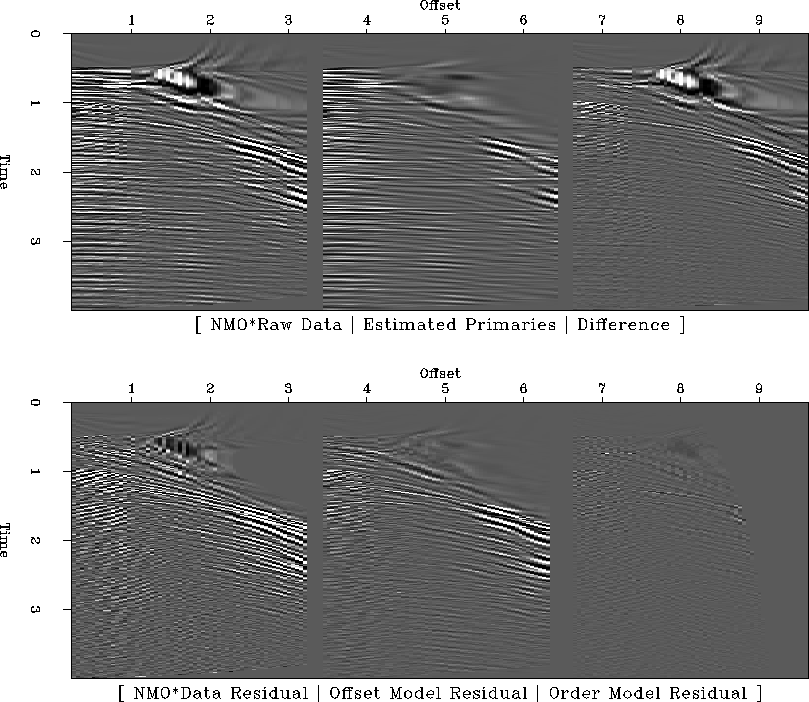 |
Figure 7 Application of equation (10) to CMP from Mobil AVO data. Top row, left to right: Raw CMP gather, NMO applied; Estimated primary panel; difference panel.
The reasons for the less-than-perfect are likely numerous. First, and most important, the multiple reflections quickly become incoherent with an increasing number of bounces. They match well with the primaries only for the strongest reflections. I estimated a relatively small water-bottom reflection coefficient, 0.1, so the multiples are relatively weak in amplitude. I did not perform any preprocessing on the data, and I believe they were donated to SEP as raw gathers. Berlioux and Lumley (1994) applied cable balancing to the Mobil AVO dataset. High-wavenumber, offset-variant amplitude variations along events spoil the ability regularization equation (8) to discriminate against crosstalk.
 |